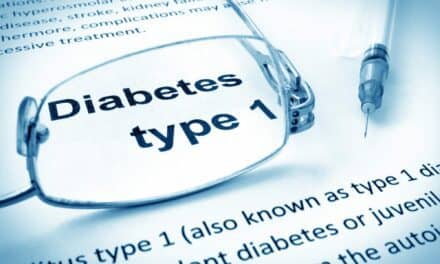GlycoMark Inc, New York, reports that results from the ongoing DURABLE clinical trial show the GlycoMark blood test is a better reflection of glucose, particularly after-meal glucose levels, than the gold standard hemoglobin A1C test in moderately controlled patients with diabetes.
The findings were reported by Kathleen Dungan, MD, of Ohio State University, Columbus, Ohio, and investigators from Eli Lilly, Indianapolis, at the American Diabetes Association’s 68th Annual scientific sessions in San Francisco.
"The data support the use of 1,5-anhydroglucitol, in conjunction with A1C, in moderately controlled patients with type 2 diabetes," Dungan said.
The trial (Assessing the Durability of Basal vs. Lispro Mix 75/25 Insulin Efficacy) confirms results from a smaller population study completed by John Buse, MD, University of North Carolina; Steven Wittlin, MD, University of Rochester; and Dungan, published in the medical journal Diabetes Care in June 2006. It marks the largest clinical study evaluating the clinical utility of GlycoMark to reflect after-meal glucose levels, with 2,094 patients enrolled from 11 countries.
In the study, the 1,5-anhydroglucitol blood test (GlycoMark) correlated more strongly than hemoglobin A1C with all self-monitored plasma glucose parameters, particularly after-meal glucose levels, in moderately controlled patients with A1C levels less than 8.0%.
"This large clinical study validates the important role of the GlycoMark test to effectively monitor patients with diabetes," said Eric Button, GlycoMark’s president. "Although patients may appear to be adequately controlled by A1C results, it may not readily reveal elevated postprandial spikes which are associated with dangerous cardiovascular complications. GlycoMark can detect ‘hidden’ glucose spikes, allowing physicians to target these spikes with specific treatments."
In a retrospective examination of studies evaluating the use of GlycoMark to monitor exenatide, pramlintide, sitagliptin, and biphasic insulin therapies, it reflected changes in after-meal glucose levels more dynamically than A1C in moderately controlled patients—underscoring its ability to detect underlying treatment effects on after-meal glucose not revealed by A1C.
The study, titled The Use of 1,5-anhydroglucitol (GlycoMark) to Monitor New Classes of Therapies for Managing Post-meal Glucose in Patients with Diabetes, was presented at the recent American Association of Clinical Endocrinologists 2008 annual meeting in Orlando, Fla. Authors of the study included Wittlin; Toshikazu Yamanouchi, Teikyo University School of Medicine, Japan; and Antonio Ceriello, Warwick Medical School, UK.
GlycoMark is an FDA-approved test for monitoring intermediate glycemic control by measuring the levels of a monosaccharide 1,5-anhydroglucitol (1,5-AG) in blood. Multiple published studies in peer-reviewed journals have shown the 1,5-AG test is a specific index of postprandial hyperglycemia (elevated after-meal glucose levels) and short-term glycemic control, providing a useful complement to A1C testing.




